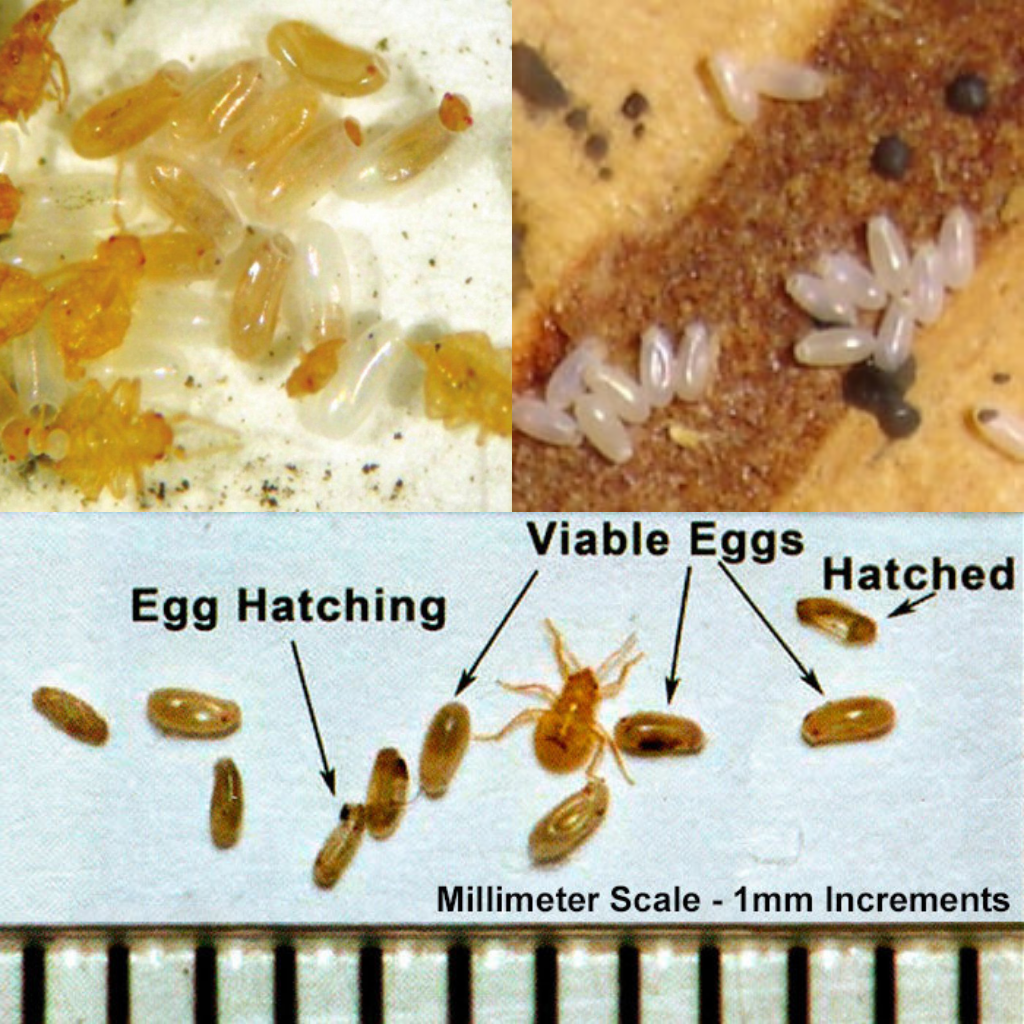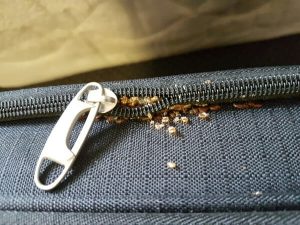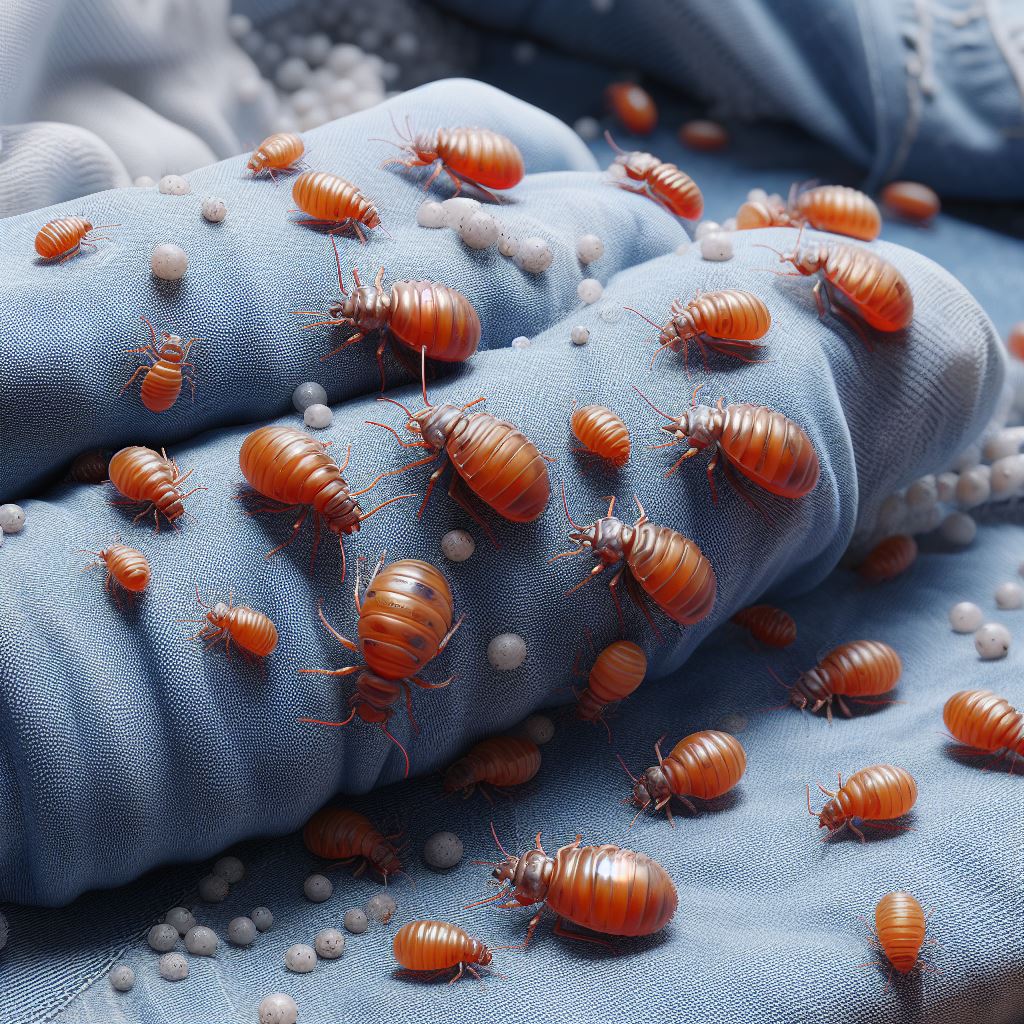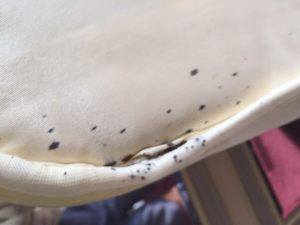Bed Bug Eggs: What Do Bed Bug Eggs Look Like?
Bed bugs are a common household pest that can cause significant stress and discomfort for homeowners. These tiny insects feed on human blood and can multiply rapidly, leading to a full-blown infestation if left untreated. One of the most critical aspects of bed bug control is understanding their life cycle, including the appearance and behavior of their eggs.
Bed bug eggs are small, white, and oval-shaped, and they are typically laid in clusters in secluded areas. They are often found in the cracks and crevices of furniture, bed frames, and baseboards, making them difficult to spot with the naked eye. However, identifying bed bug eggs is crucial for early detection and prevention of infestations.
Understanding Bed Bug Eggs

Appearance of Bed Bug Eggs
Size and Shape
Bed bug eggs are tiny and oval-shaped, resembling pearl-white grains. They're about the size of a pinhead, making them difficult to spot with the naked eye. Their small size allows them to hide in cracks and crevices easily.
Waxy Coating
One distinctive feature of bed bug eggs is their waxy coating. This outer layer gives them a shiny appearance and helps protect the eggs from drying out. The waxy coating also makes them stick to surfaces, making it challenging to remove them.
Clustering Behavior
Bed bug eggs tend to cluster together near seams, cracks, and other hidden spots. This behavior increases the chances of survival for the eggs and ensures a higher probability of infestation. Finding clusters of eggs is a sign of a significant bed bug problem.
Lifecycle Stage of Bed Bug Eggs
Laid by Females
Female bed bugs lay eggs after feeding on blood. They can lay hundreds of eggs in their lifetime, usually depositing them in secluded areas close to their feeding source. This means bed bug eggs are often found near areas where people sleep or rest.
Hatching Process
Bed bug eggs typically hatch in about a week under optimal conditions. The warmth and humidity of the environment play crucial roles in the hatching process. Once hatched, the nymphs emerge and begin searching for their first blood meal to continue their development cycle.
Importance of Addressing Eggs in Infestation Control
Dealing with bed bug eggs is essential for effective infestation control. While eliminating adult bed bugs can provide temporary relief, ignoring the eggs means the infestation will likely persist. It's crucial to use methods that target both adult bugs and their eggs to break the cycle of infestation and prevent future outbreaks.
Understanding the appearance and lifecycle stage of bed bug eggs is crucial for effective pest control. By recognizing their characteristics and behaviors, individuals can take proactive measures to address infestations comprehensively. Remember, tackling both adult bed bugs and their eggs is key to successfully eradicating these persistent pests from your home.
Where to Find Bed Bug Eggs?

One of the most challenging aspects of dealing with a bed bug infestation is locating their eggs. These tiny eggs are often hidden in inconspicuous places, making them difficult to detect. Below we'll explore common hiding spots for bed bug eggs and provide tips on how to spot them effectively.
Common Hiding Spots for Bed Bug Eggs
When conducting a thorough inspection for bed bug eggs, it's essential to know where to look. Here are some common hiding spots where bed bug eggs may be found:
Mattress Seams: Bed bugs often lay their eggs along the seams of mattresses, as these provide a snug hiding spot.
Box Springs: The space between the mattress and box spring is another favorite hiding spot for bed bug eggs.
Headboards: Bed bugs may also lay their eggs in cracks and crevices of headboards, especially if they're made of wood or fabric.
Furniture Cracks: Any cracks or crevices in furniture near the bed can serve as hiding spots for bed bug eggs.

Tips for Effective Inspection
To effectively spot bed bug eggs, follow these tips:
Use a Flashlight: Bed bug eggs are tiny and can be challenging to see with the naked eye. Using a flashlight will help illuminate dark areas and make it easier to spot eggs hidden in cracks and crevices.
Inspect Thoroughly: Take your time when inspecting potential hiding spots. Bed bugs are adept at hiding, so be sure to check every seam, crack, and crevice where they may lay their eggs.
Focus on Travel Items: Bed bugs are notorious hitchhikers and can easily stow away in luggage and travel bags. After returning from a trip, thoroughly inspect your luggage and any items you brought with you to ensure you're not bringing bed bugs into your home.
By knowing where to look and how to effectively inspect for bed bug eggs, you can catch an infestation early and prevent it from spreading further. Remember to be thorough in your inspection, use a flashlight to illuminate dark areas, and pay special attention to travel items to keep your home bed bug-free.
What to Do if You Find Bed Bug Eggs?

When it comes to dealing with bed bug eggs, it's essential to handle the situation with care and expertise. Let us discuss what to do if you discover bed bug eggs in your home.
Why DIY Treatment Might Not Cut It
If you've stumbled upon bed bug eggs, it's tempting to try and tackle the problem yourself. However, for severe infestations, DIY methods may not be sufficient. These pests are resilient and can quickly multiply if not dealt with effectively.
The Importance of Professional Pest Control
To ensure complete eradication of bed bugs and their eggs, it's crucial to enlist the help of a licensed pest control professional. These experts have the knowledge, experience, and tools necessary to tackle even the most stubborn infestations. Don't hesitate to reach out for professional assistance to safeguard your home and family.
Steps to Prepare for Treatment
Before the pest control professional arrives, there are some essential steps you can take to prepare your home for treatment:
1. Washing Bedding and Linens
Start by washing all bedding, linens, and clothing in hot water. High temperatures can help kill bed bugs and their eggs, reducing the chances of reinfestation.
2. Vacuuming Thoroughly
Vacuum carpets, rugs, and upholstery thoroughly to remove any bed bugs, eggs, and debris. Pay special attention to cracks, crevices, and seams where these pests may hide.
3. Decluttering
Clear clutter from your home, as bed bugs often seek refuge in cluttered areas. Removing unnecessary items can make it easier for the pest control professional to inspect and treat your home effectively.
4. Sealing Cracks and Gaps
Inspect your home for any cracks, gaps, or openings where bed bugs could enter or hide. Seal these entry points to prevent future infestations.
Frequently Asked Questions (FAQ'S)
Q. What do bed bug eggs look like?
Bed bug eggs are tiny, about the size of a pinhead, and are white or translucent. They're usually found in clusters, often in mattress seams, crevices, or on bedding.
Q. How long does it take for bed bug eggs to hatch?
Bed bug eggs typically hatch in about 6 to 10 days under optimal conditions of temperature and humidity. Newly hatched bed bugs are called nymphs.
Q. How many bed bug eggs can a female lay?
A female bed bug can lay up to 200 eggs in her lifetime, typically laying around 1-5 eggs per day. Eggs are laid in batches, usually in secluded areas near hosts.
Q. What kills bed bugs and their eggs?
Professional-grade insecticides, heat treatments, and steam cleaning are effective in killing both bed bugs and their eggs. Vacuuming and laundering bedding at high temperatures can also help eliminate eggs.
Q. How to get rid of bed bug eggs?
To effectively get rid of bed bug eggs, thorough cleaning and vacuuming are essential. Launder bedding and clothing at high temperatures, and consider using insecticides or professional treatments for complete eradication.
Q. What kills bed bug eggs?
Bed bug eggs can be killed using heat treatments, steam cleaning, or insecticides. Ensure thorough application and follow-up to eliminate all eggs and prevent future infestations.

